Norwood-Hamilton Scale: A Tool for Gauging Androgenetic Alopecia Progression in Men

Sommaire
Hair loss in men is a well-known phenomenon that typically unfolds in distinct stages. Generally, it initiates with the hairline receding at the temporal areas and forehead. This thinning then extends towards the top of the head or vertex until only a crown of hair is left behind. In common parlance, this process is referred to as ‘baldness’. However, the scientific community uses the term ‘alopecia‘. When such hair loss is genetically influenced, it’s identified as ‘androgenetic alopecia‘. The Norwood-Hamilton scale has been specifically developed to precisely evaluate and chart this progression of hair loss in men.
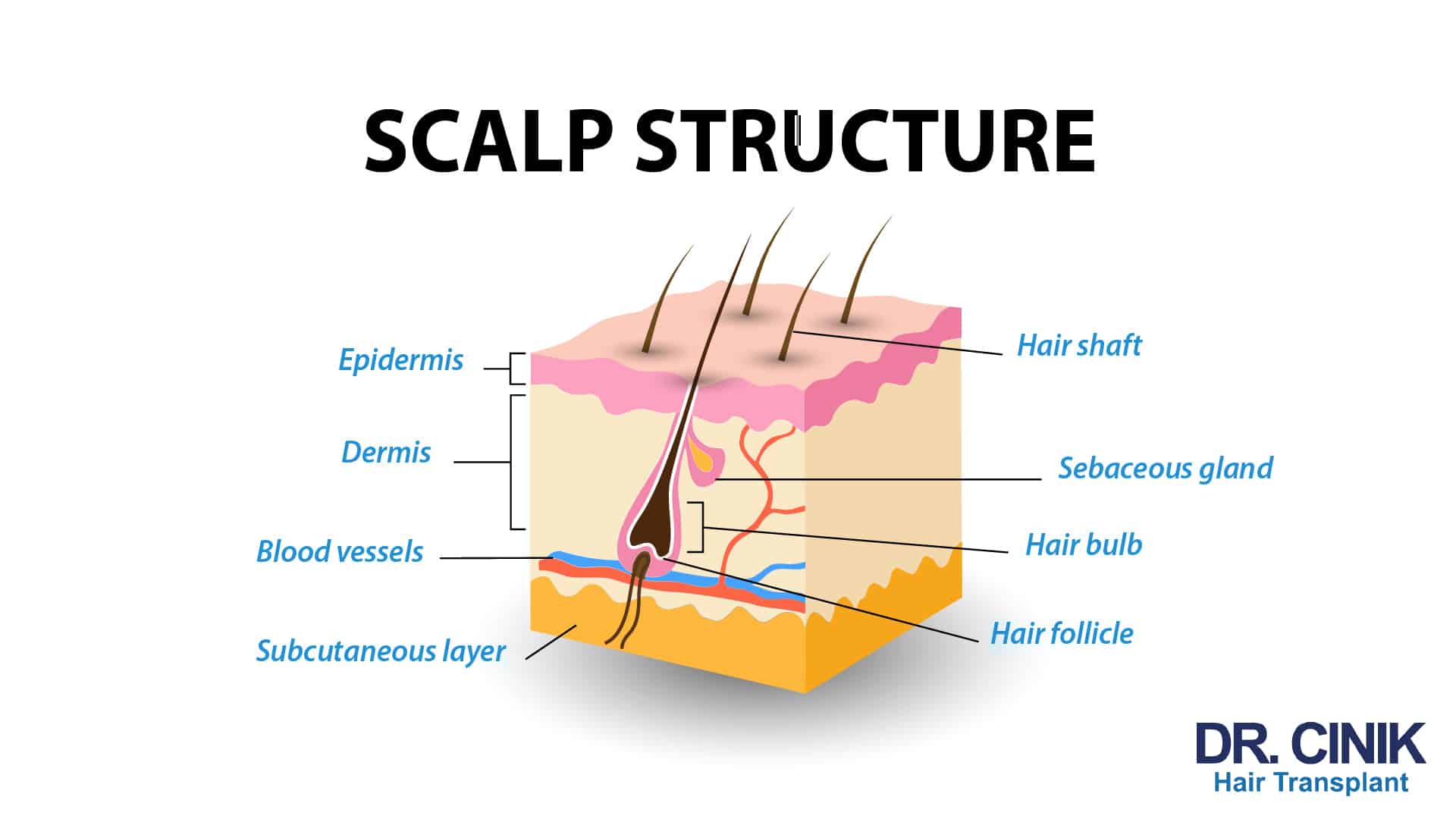
What is androgenetic alopecia?
Alopecia can affect both men and women. However, the proportions are far from equal. Studies show that by the age of 40, 50% of men suffer from hair loss compared to only 20% of women. It is, therefore, quite common for a man in his forties to begin to lose his hair.
Androgenetic alopecia, also known as “male pattern baldness”, has hormonal and genetic causes. It is not a one-off hair loss but a regular loss of hair spread over time.
In men, a hormone called Dihydrotestosterone (DHT), related to testosterone, plays a crucial role in hair growth. This hormone is involved in the natural hair cycle, which normally consists of 20 to 25 cycles per follicle, ensuring a healthy head of hair. However, as men age, DHT can shorten the length of these cycles, leading to hair being lost faster. Consequently, the ‘hair capital’ or overall hair density diminishes more rapidly, causing hair to become thinner and fall out sooner, potentially leading to the permanent loss of the hair follicle.
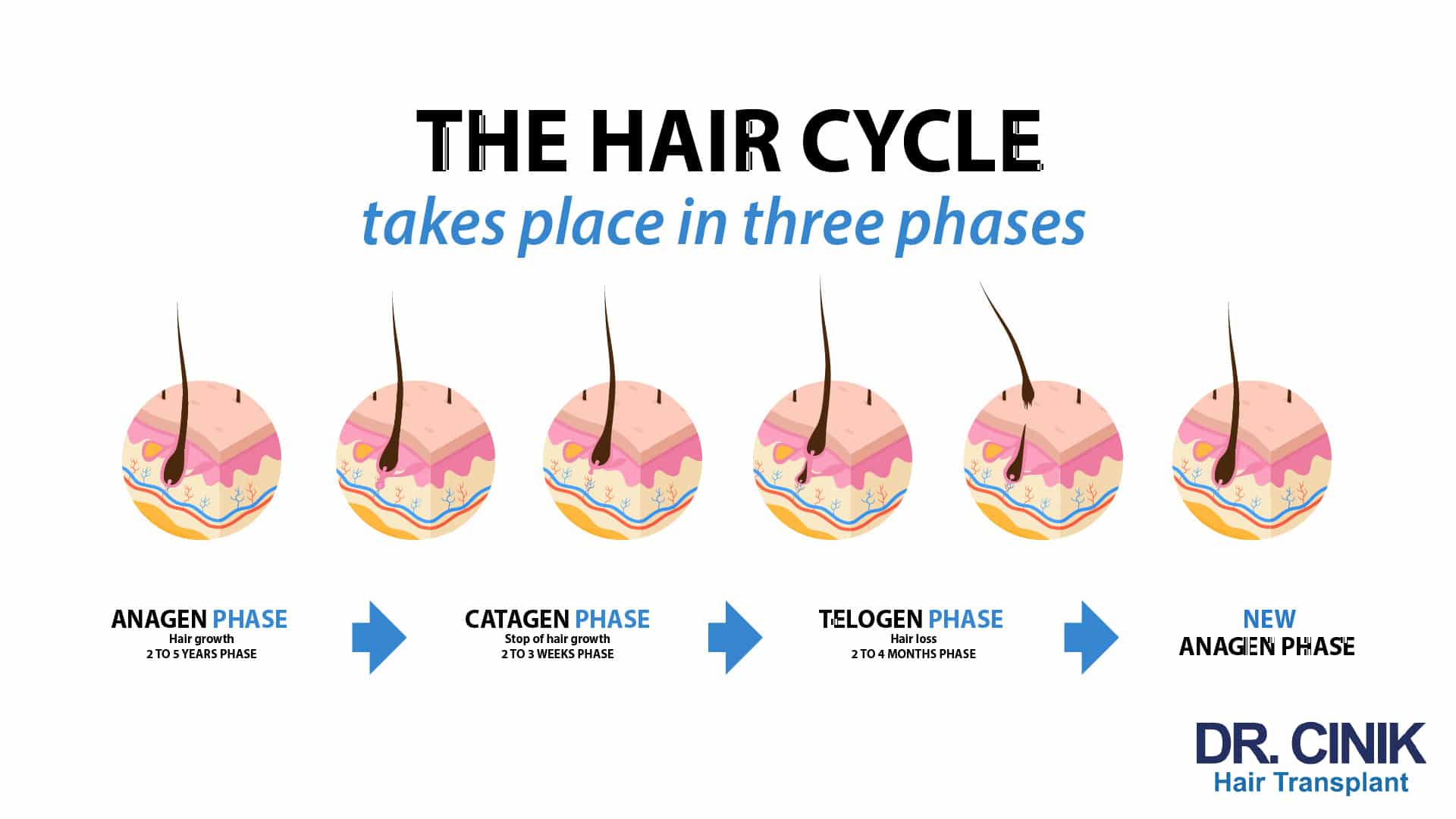
Androgenetic alopecia, or pattern hair loss, doesn’t solely originate from hormonal changes; it also has a genetic component. The degree of hair loss can indeed be influenced by your family history, specifically through your maternal line. For instance, if your maternal grandfather experienced significant baldness, there’s a chance you may inherit this trait.
History of the Norwood Hamilton Scale
The Norwood-Hamilton scale is a widely recognised tool for grading the progression of androgenetic alopecia, or male pattern baldness. Its inception is linked to the work of Dr Hamilton in the United States during the 1950s. Through studying twins, one of whom was a castrated prisoner who no longer produced testosterone, Dr Hamilton highlighted the critical role of hormones in hair loss. While the castrated twin maintained a full head of hair, his uncastrated twin exhibited considerable hair loss. After administering testosterone to the castrated twin, Dr Hamilton found that this individual also started to lose hair, thereby establishing the influence of hormones, specifically DHT, in the onset of alopecia.

Following these discoveries, Dr Hamilton created the first scale to measure the extent of baldness. In the 1970s, Dr Norwood further developed this scale, refining the measurement parameters and introducing additional factors to create the Norwood-Hamilton scale we use today. A version of this scale, specifically designed to assess female pattern hair loss, exists and is referred to as the Ludwig Scale.
How does the Norwood Hamilton scale work, and why is it used?
Due to its universal applicability, the Norwood-Hamilton scale remains a highly utilised tool. It is valid across all hair types, from the straightest to the curliest. Another significant benefit of this scale is its simplicity and ease of use, primarily because it relies on visual references. Both Norwood and Hamilton identified several distinct stages of androgenetic alopecia, each stage accompanied by multiple images that present the scalp from various perspectives. This visual representation allows individuals to self-assess their hair loss progression.
The success of the Norwood-Hamilton scale can be attributed to its straightforwardness, universality, and clarity. This measurement tool continues to be invaluable in understanding and documenting the progression of male pattern baldness.
The different stages of baldness according to the Norwood Hamilton scale
This scale has 7 stages, corresponding to the different stages of alopecia. You can therefore use the descriptions below to assess your situation.
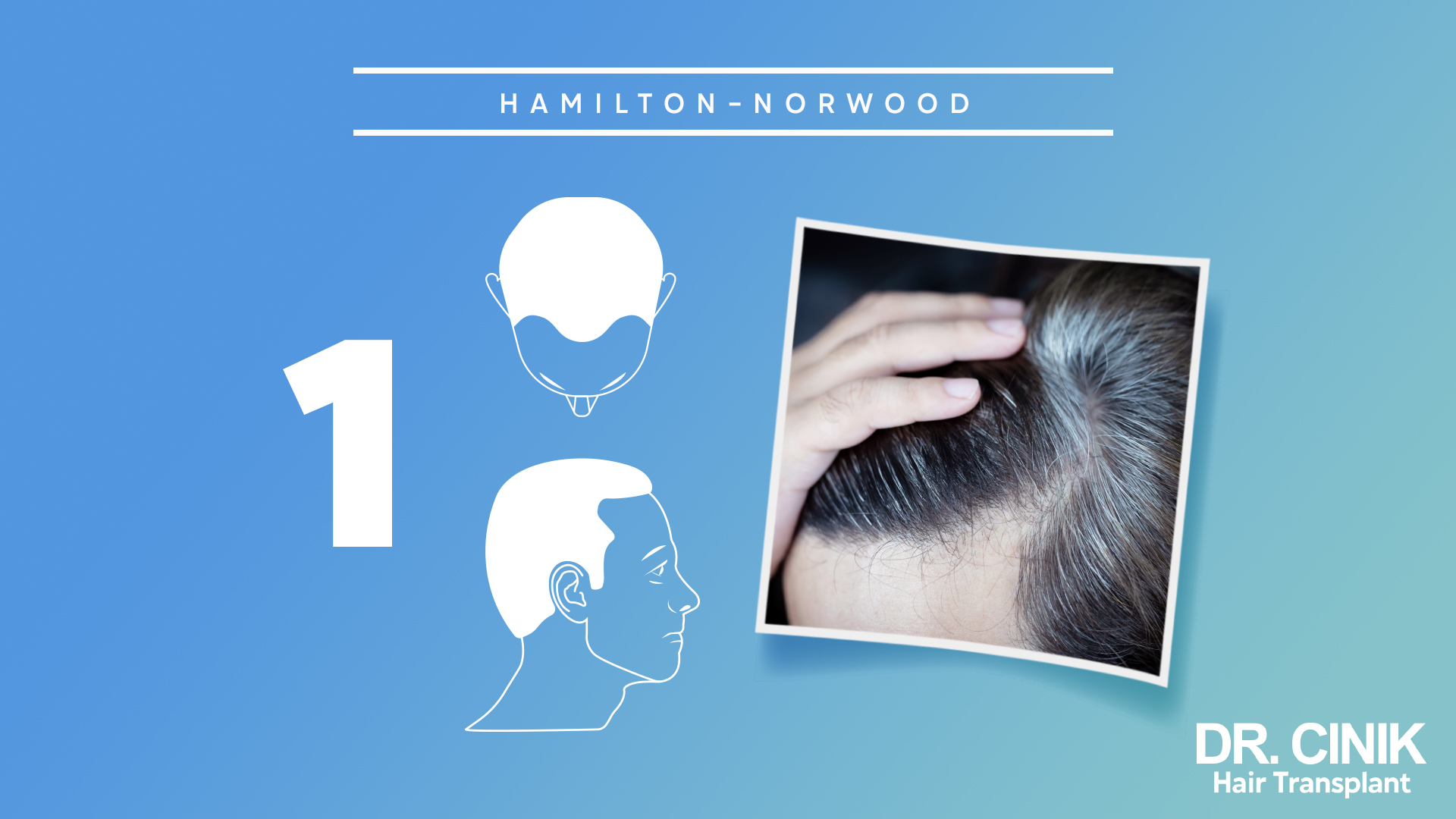
Stage 1: barely visible hair loss
Despite a loss, there is no apparent baldness. However, a slight receding hairline can be seen in the temporal and frontal gulfs.
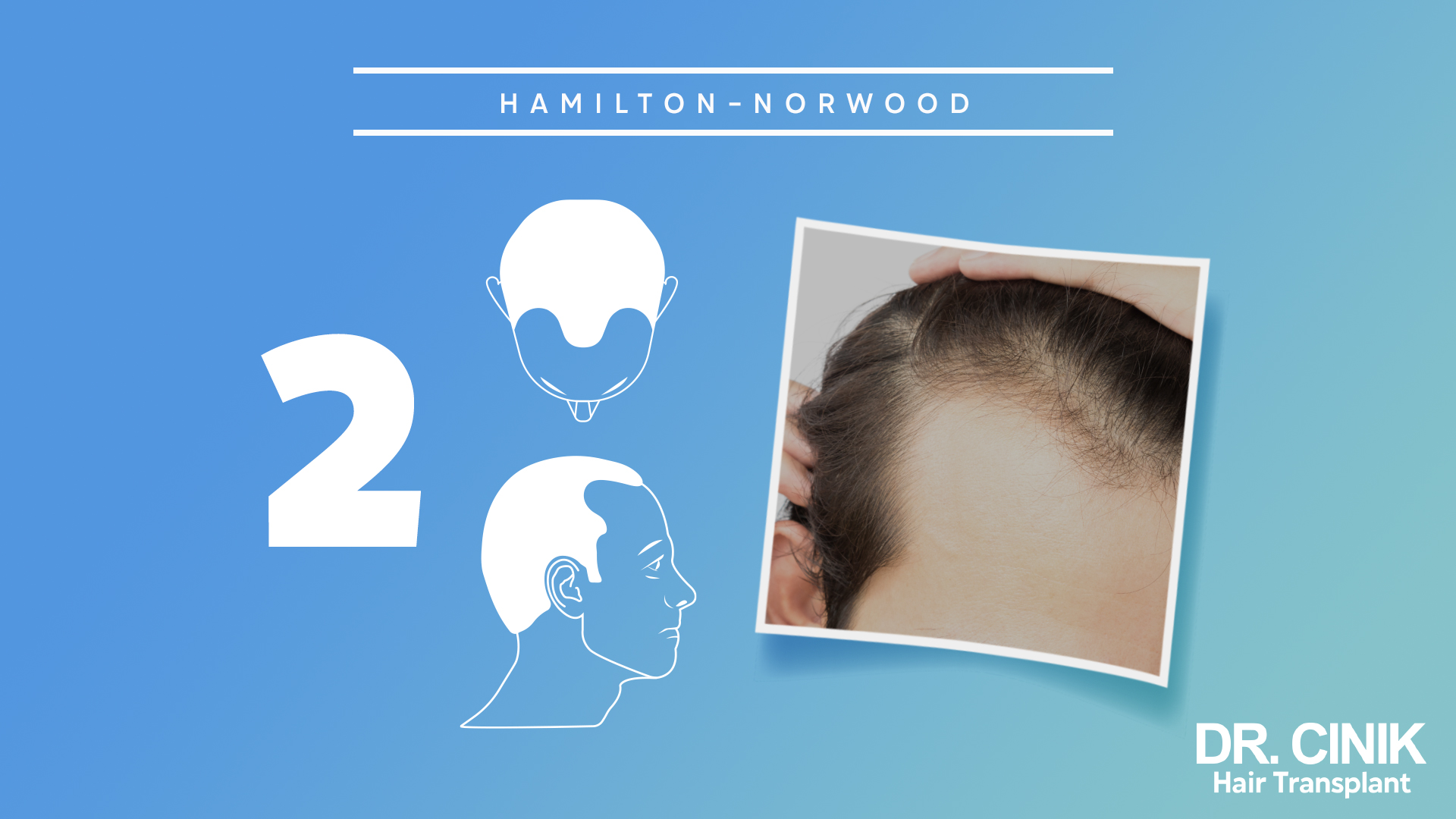
Stage 2: slight balding of the frontal area
The hair starts to become a little thinner, and the hair loss in the temporal-frontal area is more visible. A very slight loss in the vertex may be visible.
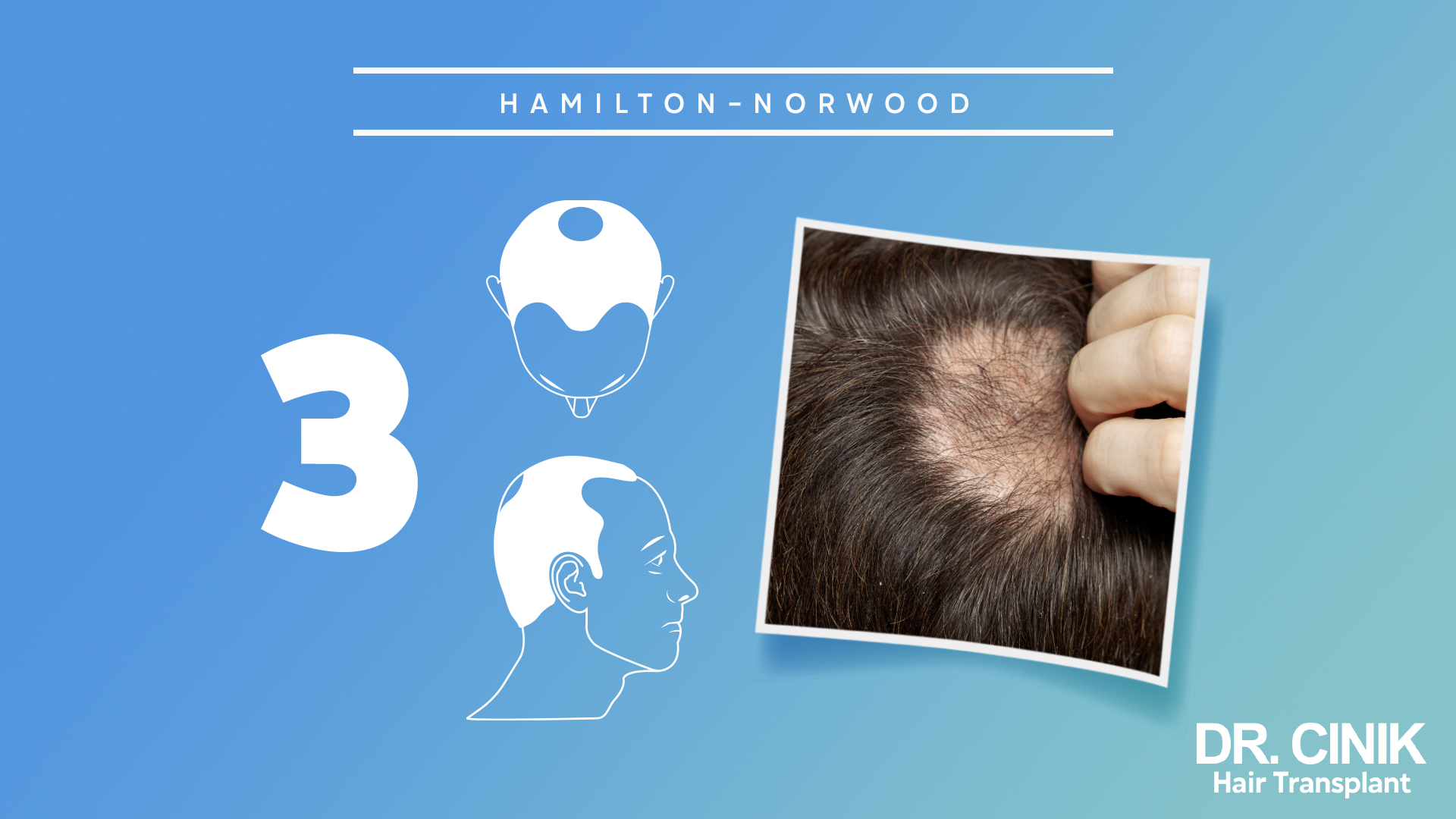
Stage 3 A: proven baldness
At this stage, the hairline exhibits a prominent U-shaped recession in the temporal and frontal areas, indicating further progression of hair loss. The hairline at the forehead is visibly receding. Additionally, a minor bald spot emerges at the vertex or the top of the head.
Stage 3 vertex: significant hair loss on the top of the head
At this particular stage, the back of the scalp retains its full hair coverage. However, a noticeable bald spot, or ‘hole’, becomes evident on the vertex (top) of the head. This stage often occurs concurrently with phase 3A. Nevertheless, there can occasionally be a time difference between the appearance of these two stages.
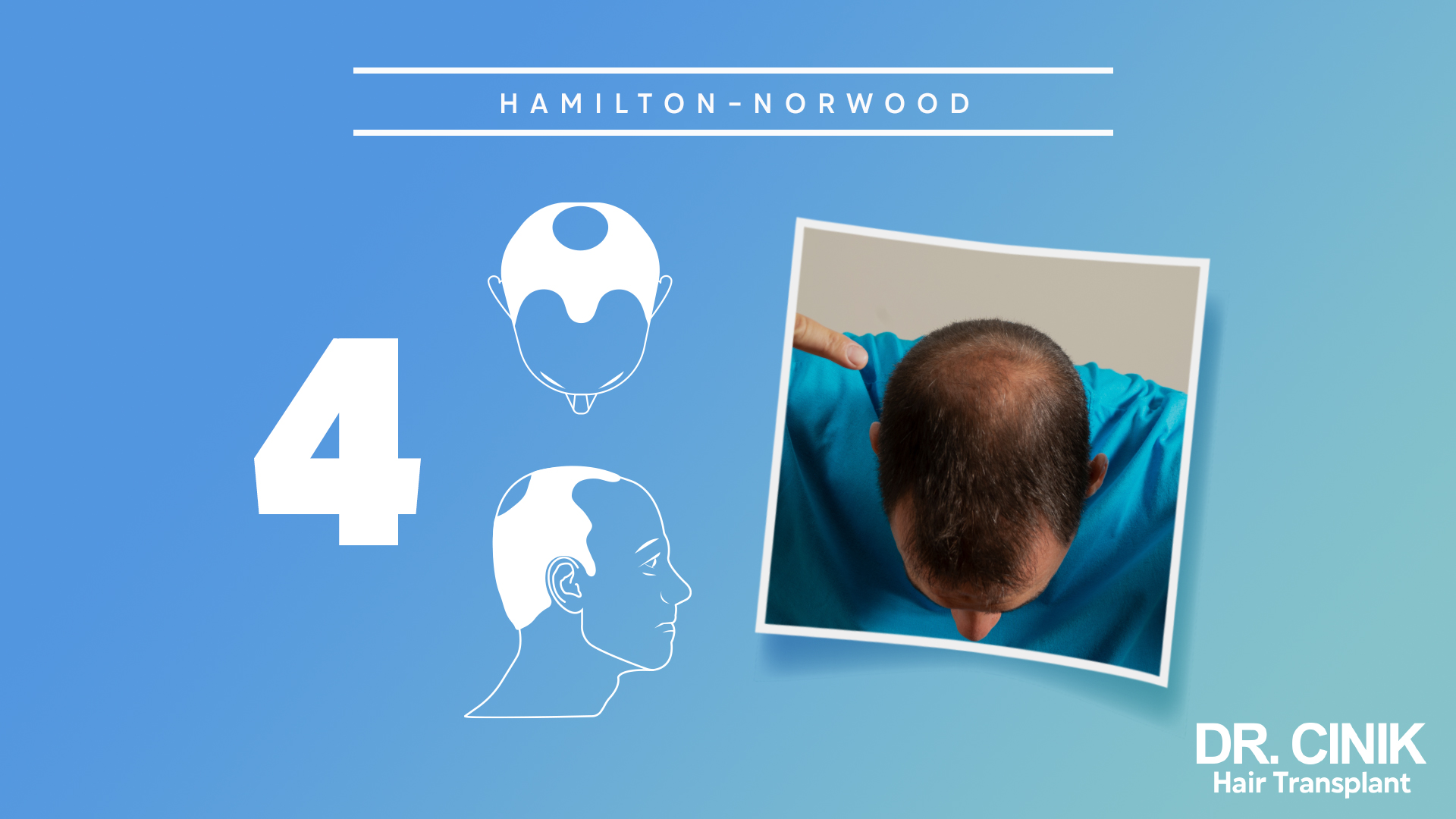
Stage 4: the top of the head is bald
The hair loss above the forehead becomes significant, and only a band of hair now connects the two sides of the skull. The temporal area remains relatively hairy.
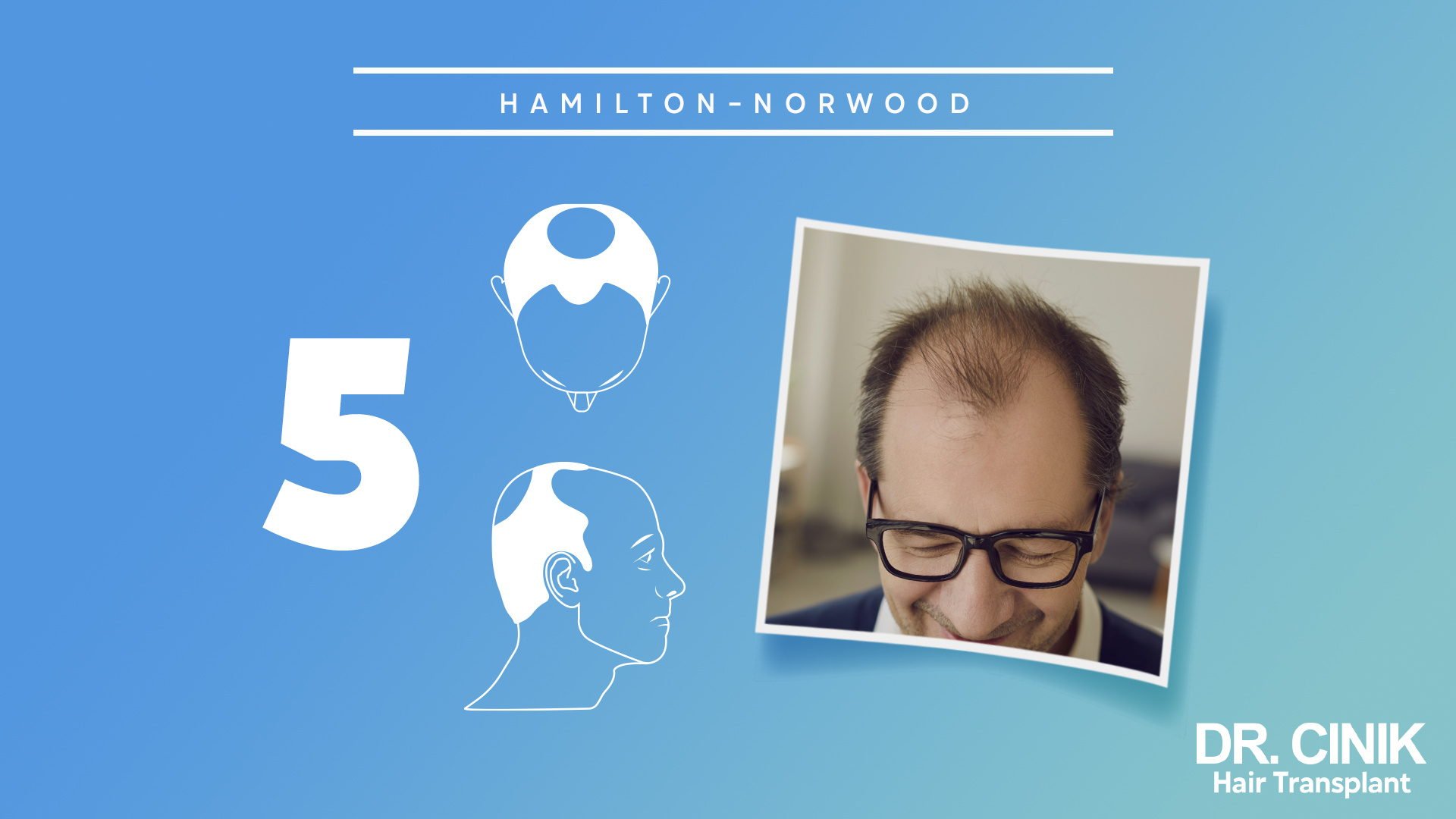
Stage 5: Very advanced baldness
The baldness is generalised. You still have hair on the sides and back of your head, but a thin, sparse band only occupies the upper area.
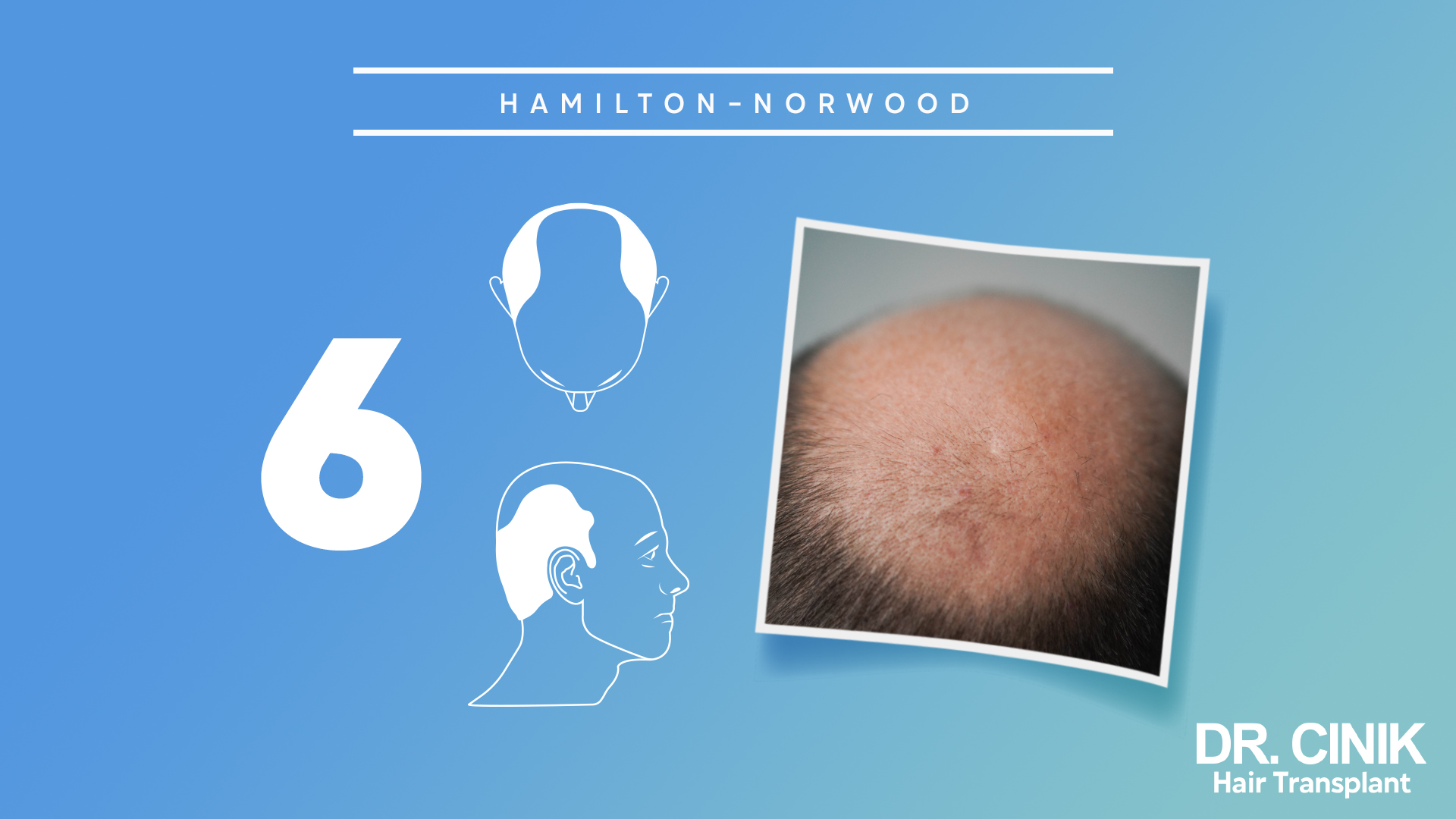
Stage 6: Monk’s baldness
Your hair implantation now makes you look like a monk. A crown of hair joins the two temples through the back of the head. The vertex is now completely bald.

Stage 7: the most advanced androgenetic alopecia
The baldness is total on the entire upper part of the head. Some hair remains on the sides and back of the head, but it is thin and irregularly distributed.
When should a hair transplant be undertaken?
Androgenetic alopecia is experienced more or less painfully by those affected. However, solutions exist, in particular hair transplants.
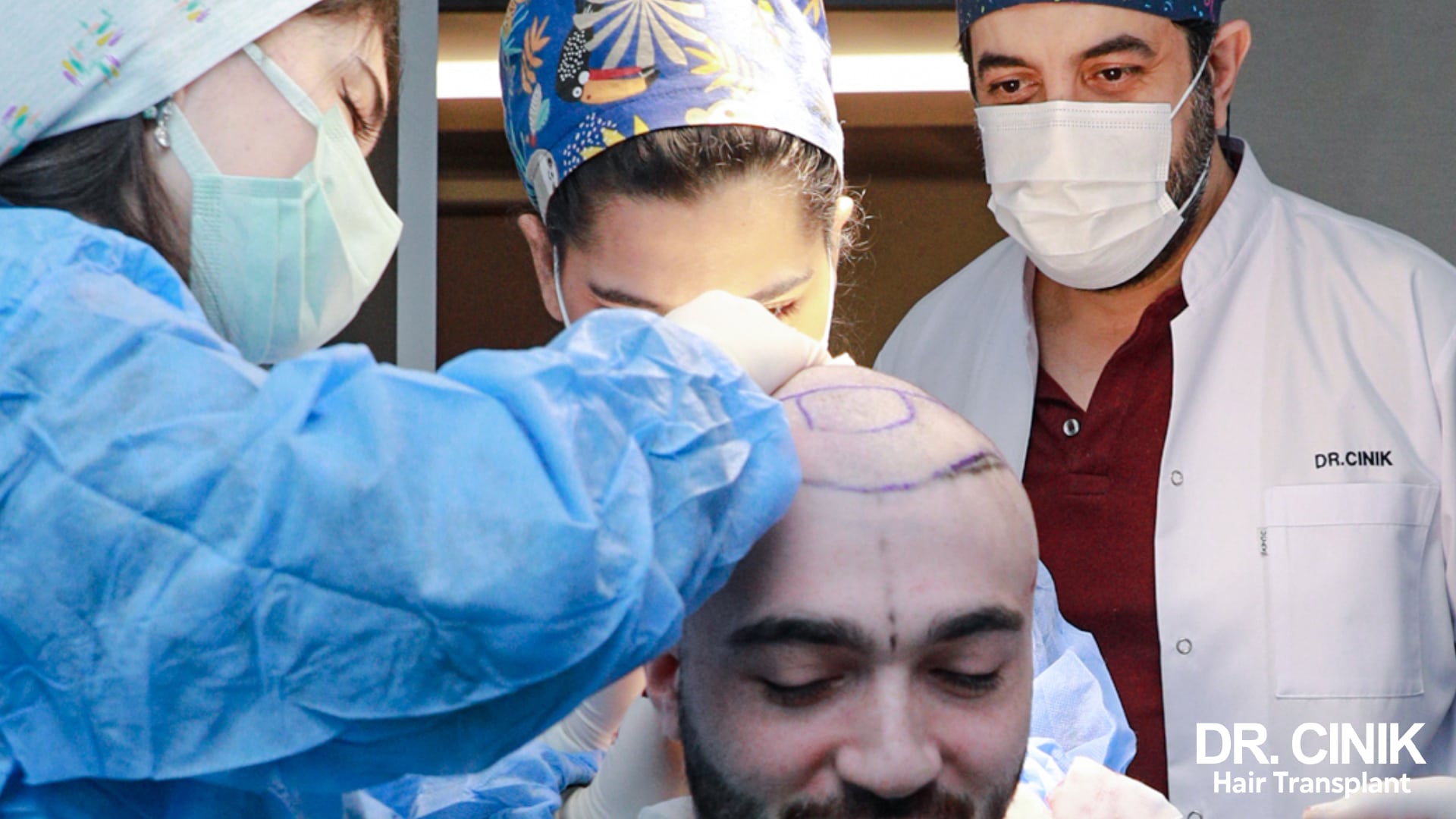
This perfectly mastered technique allows us to restore natural hair density. The Norwood-Hamilton scale allows you to determine the most suitable moment for such an intervention. You should not wait until stage 6 or 7 of your alopecia. The surgical intervention would be longer, more complex and sometimes impossible.
Things to consider before opting for a hair transplant
Hair transplantation is a durable and invisible surgical procedure. But before considering such an operation, two criteria must be considered.

Age
The evolution of alopecia is specific to each individual, both in terms of its appearance and its evolution. Hair surgeons consider that no intervention should be considered before the age of 30. This generally corresponds to a period of stabilisation of the alopecia.
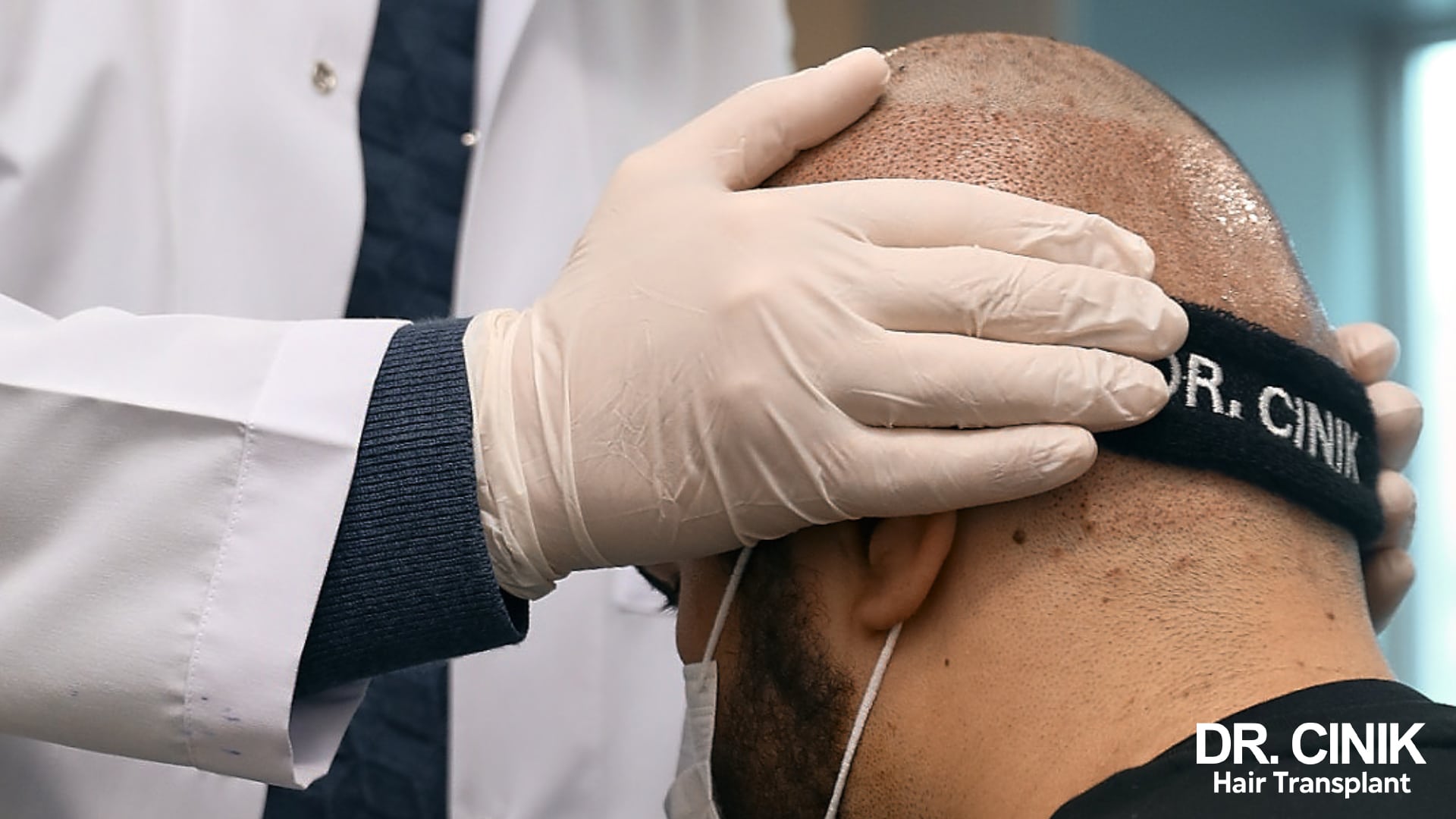
Stability of alopecia
This criterion is very directly linked to the previous one. It is recommended that a hair transplant should only be considered once the alopecia has stabilised overall. If the operation is carried out too early, while hair loss is still ongoing, it will not cover all the areas concerned. There is, therefore, a risk of creating an unsightly imbalance between the areas that have received grafts and those that have become bald after the graft.
Which hair transplant, according to the degree of alopecia: how many grafts do I need?
A hair transplant usually requires only one operation. However, a second operation may be necessary a few years later. The surgeon rarely implants more than 4,000 grafts in a single operation. These grafts are taken from the back of the head that has remained hairy.
How many grafts do I need depending on my type of baldness?
Each stage of androgenetic alopecia requires a certain number of grafts.
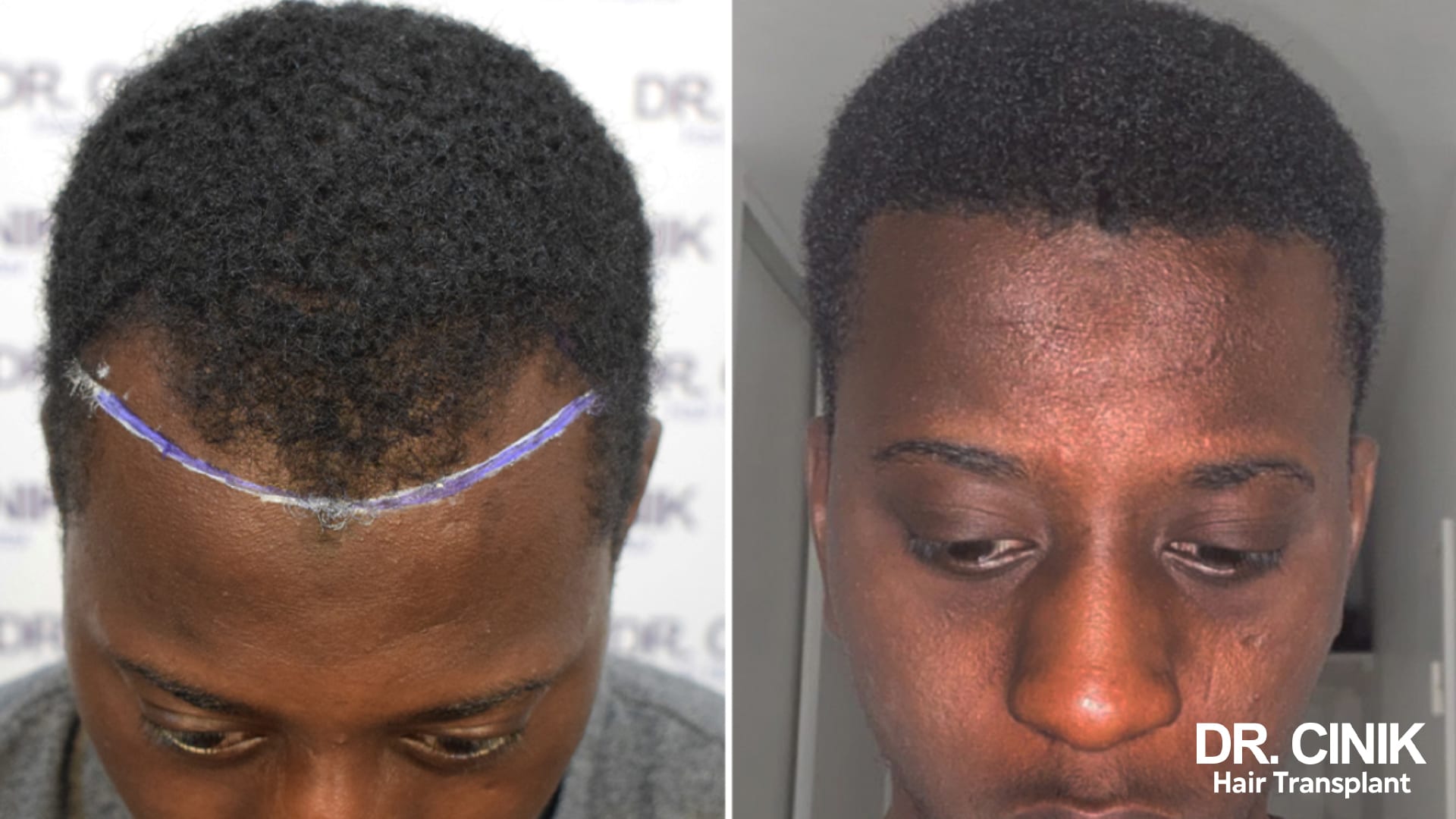
Stage 1: Not possible yet to start a hair transplant
At this stage, hair transplantation is not recommended by doctors.
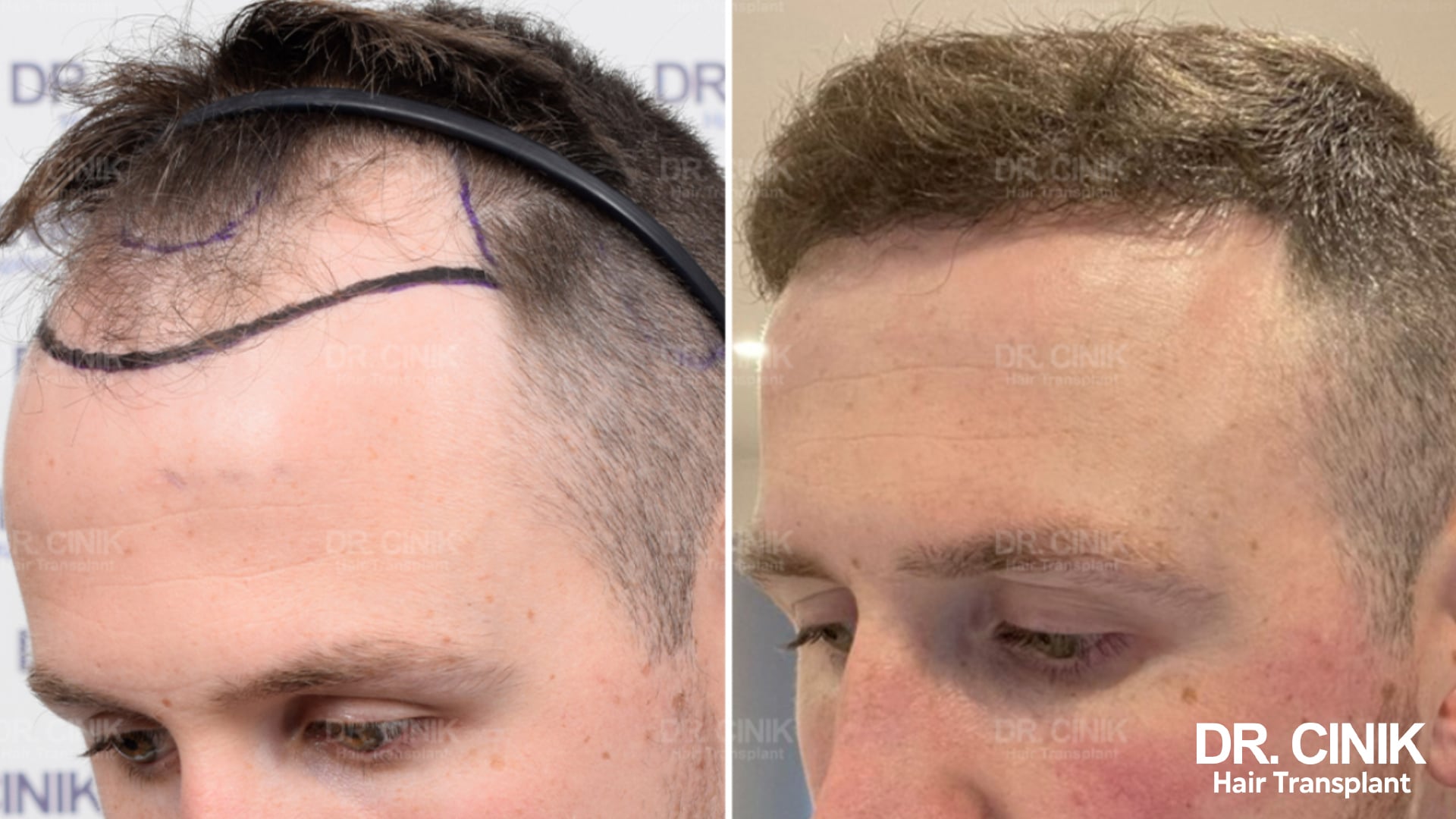
Stage 2: It is usually necessary to wait a little bit longer
This is a very early stage of baldness that usually does not require intervention. The alopecia is probably not yet stabilised.

Stage 3: 1500 – 3500 grafts
This is the first phase in which a hair transplant can be considered. For an optimal result, make sure that the above criteria are respected.
Stage 3 vertex: 2000 – 3500 grafts
It is when the baldness reaches the vertex that many patients take the plunge and have the operation

Stage 4: 3500 – 4500 grafts
Stage 4 is the one at which it is highly recommended to consider your hair transplant. Your alopecia has likely stabilised, and you can expect the best possible benefits from the procedure.

Stage 5: 3500 – 4500 grafts
The baldness is already very advanced. The removal of follicles will be quite important.

Stage 6: 4500 – 6000 grafts. Likely, it is no longer possible to perform a hair transplant
This is the last stage at which it is still possible to perform a hair transplant. However, because the alopecia is so advanced, removing follicles may be more complicated. We recommend not waiting until this stage before considering an operation.
Stage 7: It is no longer possible to do a hair transplant
Hair loss has become too widespread at this stage. You no longer have enough healthy follicles to consider a hair transplant.
 en
en



